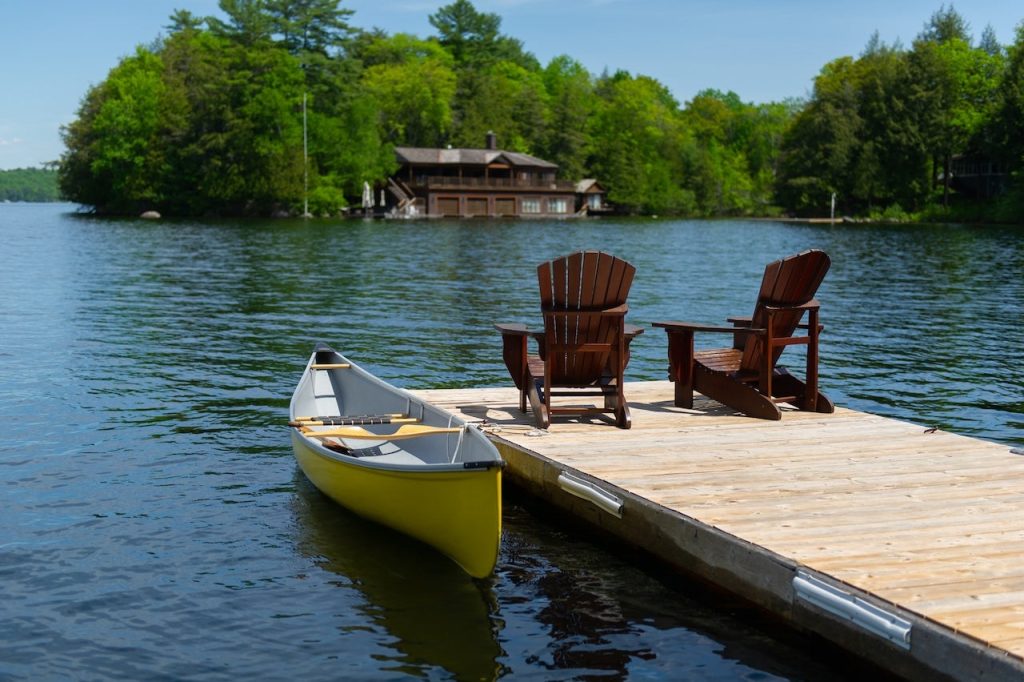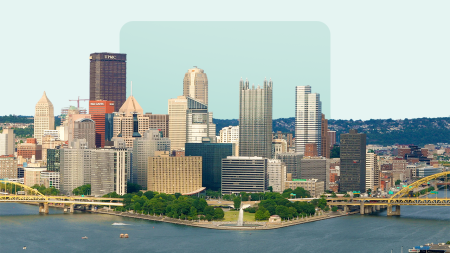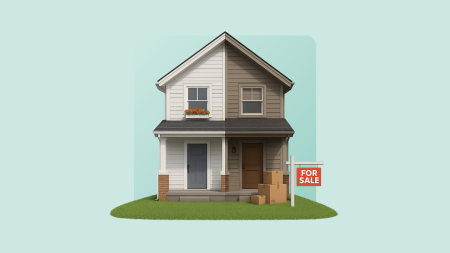Ask people where they’re heading this summer, and you’ll likely find some familiar big-name tourist spots. However, Bankrate’s 2025 Vacation Rental Study shows that there is plenty of big demand in smaller spots, too. The study analyzed the top 50 in-demand vacation rental markets in the country to determine where homeowners increase short-term rental rates the most when warm weather rolls around. Property owners in some surprising places may be able to cash in on the country’s appetite for seasonal getaways.
These are the top five housing markets that experience the biggest growth in average rental rates during the spring and summer months — if you own a home in one of these areas, seasonal rental income might be able to help the sun shine on your bottom line.
1. Augusta, GA
- Maximum average daily rate: $541
- Minimum average daily rate: $194
- High season markup: 178%
Augusta attracts plenty of tourism in the spring, when golf enthusiasts descend on the city for the chance to see the next Masters champion don a green jacket. However, the hometown of soul legend James Brown has so much more to offer for families in search of fun. Travelers can kayak down the Savannah River, stroll the RiverWalk and catch live music at the Jessye Norman Amphitheater. Plus, the city hosts a number of big summertime events, including the Augusta Pride Festival, a Juneteenth Festival and a huge 4th of July celebration.
2. Long Island, NY
- Maximum average daily rate: $785
- Minimum average daily rate: $362
- High season markup: 117%
From Freeport to Montauk, you’ll find a wide range of charming towns on Long Island. While each has its own vibe, they all share one common ingredient: They’re not New York City. Many city-dwellers escape the urban jungle to stroll through quaint downtowns, enjoy beaches and nightlife in the Hamptons, and raise a toast to the good life at North Fork wine country’s 60-plus vineyards.
A lot of rental owners here get more than just a three- or four-night stay, too. Cynthia Barrett, a Bridgehampton-based real estate broker with Brown Harris Stevens, says that while short-term sites like Airbnb and VRBO have a presence here, it’s more common to rent out a home for at least a month. “Homeowners will capitalize on the summer season by renting out their house and downsizing to a smaller home,” Barrett says. “People command a lot of money for rentals here. Some treat it like a staycation — they move close by to a smaller place and get a break from their usual routine.”
3. Albany/Saratoga Springs, NY
- Maximum average daily rate: $439
- Minimum average daily rate: $224
- High season markup: 96%
New York vacationers aren’t just chasing the ocean wind; many of them are equally happy with the calming breeze coming off Saratoga Lake. Saratoga Springs, just north of the capital city of Albany, was recently named one of the best small college towns in the country by USA Today (it’s home to both Skidmore College and Empire State University).
And when class isn’t in session, this place is still buzzing with energy — starting with the Saratoga Race Course, the oldest racetrack in the country, which is hosting the Belmont Stakes of horse racing’s famous Triple Crown this year and other races through Labor Day. Rental owners can bet on a steady stream of bettors: An average of 25,000 people head to the racetrack each day during the season. In addition, the Saratoga Performing Arts Center regularly welcomes some of the biggest touring acts in the country, including (this summer) Shania Twain, Blink-182, Dave Matthews Band and Jerry Seinfeld.
4. Bozeman, MT/Yellowstone National Park
- Maximum average daily rate: $611
- Minimum average daily rate: $313
- High season markup: 95%
Bozeman resident Erin Mandeville Strand, a real estate broker with HōM 406, says the area’s popularity “is driven by outdoor recreation, full stop.” The Rocky Mountain town is situated between two main entrances to a legendary place for outdoor recreation — Yellowstone National Park, home of Old Faithful. But visitors can also find plenty of biking, hiking, climbing, rafting, paddling and fishing even closer in Custer Gallatin National Forest and along the Madison River.
Throughout the summer, many homes sit empty thanks to properties owned by the families of students at nearby Montana State University. “Historically, rent is the same cost per month as a low down payment loan, in the first year,” Mandeville Strand says. Many of these parents are able to cash in on the summer demand.
5. Lake of the Ozarks, MO
- Maximum average daily rate: $407
- Minimum average daily rate: $212
- High season markup: 92%
The landlocked Midwest might not be well known for boating, tubing and basking on the beach, but Lake of the Ozarks can give locals with coastal envy a place to go without booking a flight. The man-made lake has more shoreline than California — 1,150 miles of it — and welcomes more than five million tourists each year. Owners of the 70,000-plus lakeside homes can charge a hefty premium for the ability to wake up and jump right in. And even properties a bit farther from the waterfront can attract plenty of interest: The area surged into the top 10 Airbnb searches during the peak of the pandemic, and it’s safe to say that the appeal of relatively affordable lodging paired with fun in the sun will continue to draw massive crowds.
If you want to rent out your home
If you live in one of these markets, or in any area of the country with seasonal tourism, cashing in on high travel demand can be very appealing. But there are serious implications that should be considered. Before you take steps to rent out your property, ask yourself these key questions:
- Are you allowed to have renters? If your property is a condo or part of a homeowners association, check the rules for any red flags about short-term renting. As Airbnb and VRBO have increased in popularity, some parts of the country have seen a backlash, with laws and proposals aiming to restrict short-term rentals in an effort to avoid a constantly revolving door of neighbors.
- Will you be able to find renters on your own? Finding and vetting appropriate tenants may require signing up for a service or even working with a local real estate agent, neither of which is likely to be free. Be sure to build the cost into your budget.
- Do you have the appropriate insurance? Insurance companies view rental properties differently than they do owner-occupied homes. If you’re considering renting, reach out to your provider first to determine how your homeowners policy will need to be adjusted — and how much more it will cost you.
- Who is going to manage it? Running a short-term vacation rental might feel a lot like running a small hotel. If you aren’t able to handle the work on your own — managing check-in and check-out procedures, fixing problems, cleaning up and preparing for the next guest — you’ll need to hire a property management company to do it. As you crunch the numbers, be sure to consider how much you’ll need to pay for this service, and if it’s worth it.
- What are the tax implications? Finally, if you earn money from a real estate rental, you’ll likely need to report it to the IRS as taxable income. So it may be smart to consult a tax professional about the potential consequences for your bottom line before you become your neighborhood’s newest Airbnb host.
Why we ask for feedback
Your feedback helps us improve our content and services. It takes less than a minute to
complete.
Your responses are anonymous and will only be used for improving our website.
Help us improve our content
Read the full article here












